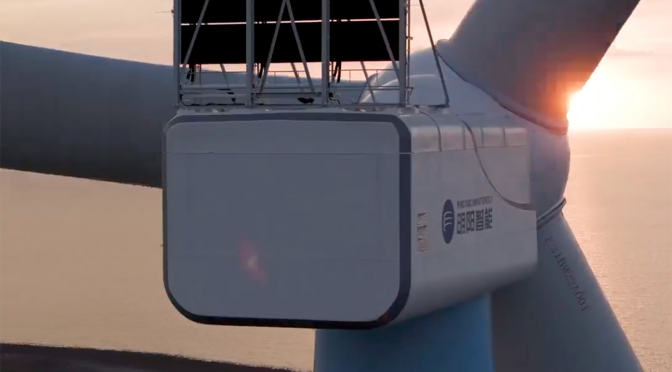As our friend Kiko Maza says: it was only a matter of time.

Although it is not yet a firm order, there is no doubt that Mingyang and Luxcara have begun to negotiate seriously and exclusively for this project (at least that’s what being the preferred bidder usually means).
Several points that may have led Luxcara to opt for Mingyang:
Economic: faced with rising prices in the supply chain and recent news of several project cancellations and/or delays due to profitability issues, Luxcara may have had to turn to Mingyang to save the project. And not just because the cost per MW might be lower, but also because of savings in infrastructure and “manpower” (fewer monopiles, fewer ship hours for assembly, potentially lower maintenance costs due to fewer units…).
Financing: one of the key points Kiko Maza mentioned on LinkedIn is that it would be interesting to know if the project is financed by Western banks or comes from Chinese banks through Mingyang.
Permitting: the agreed model is the MySE 18.5-260, a power and rotor diameter that no Western OEM can currently offer. I am unaware of how permitting works in Germany and how flexible it is, but Luxcara might have been left without much room to maneuver if it initially developed the wind farm with turbines of this power/size in the hope that one of the Western OEMs would have a model of these characteristics by now. Maybe some of you can tell me more about this
According to Luxcara, Mingyang’s wind turbines were selected following an international tender launched at the end of 2023 and after a due diligence exercise supported by DNV and KPMG that covered the supply chain, ESG compliance with the EU taxonomy, and cybersecurity.
Interesting to see that it was not one of the major European developers who took the first step to (potentially) incorporate a Chinese supplier into their projects. It makes sense, as the big ones have higher entry barriers: historical relationship with Western OEMs, political (and lobbying) pressures, and certain reputational risk.
Although it is true that the big ones are also making some approaches. Specifically, this announcement coincided with RWE’s visit to Mingyang’s facilities and its OceanX floating prototype these days as well. And they have not done it discreetly, on the contrary, the Offshore CEO and their Director of Engineering have publicized it on LinkedIn with great fanfare.
It also seems very relevant to me that Luxcara and Mingyang have decided to make this pre-agreement public when they could have continued negotiations confidentially. For Mingyang, it is undoubtedly a “goal” in its strategy to enter the European market, but I don’t see the advantages for Luxcara beyond “stirring the hornet’s nest” and seeing the reactions.
Maybe that’s precisely what it is looking for because the German Government has already reacted by saying it will “closely scrutinize the agreement” while Luxcara has stated that “the management, operation, and control of the Waterkant wind farm will remain entirely in the hands of an independent German company.”
I find it surprising that the first serious incursion of a Chinese OEM into the West is through an offshore wind farm rather than onshore, where the figures and risks are lower and it would be presumably simpler (although in the EU there are a few projects with Chinese turbines onshore, they are still anecdotal).
And of course, all this commotion is happening even as the EU announced last April that it would investigate Chinese manufacturers.
Finally, according to S&P Global (it’s worth reading the article), Mingyang’s arrival in Europe could reignite the European race to offer ever larger wind turbines.
Mingyang’s 18.5 MW and 260 m are far ahead of Siemens Gamesa and Vestas’ 15 MW and 236 m, and even further from General Electric’s 14.7 MW and 220 meters. In fact, General Electric even halted its plans to go up to 17-18 MWs to settle for 15.5 MW in its next development.
But if this project between Luxcara and Mingyang succeeds, Western OEMs may be forced to match the 18-19 MW range. Siemens Gamesa, at least, is known to be developing a 21 MW turbine.